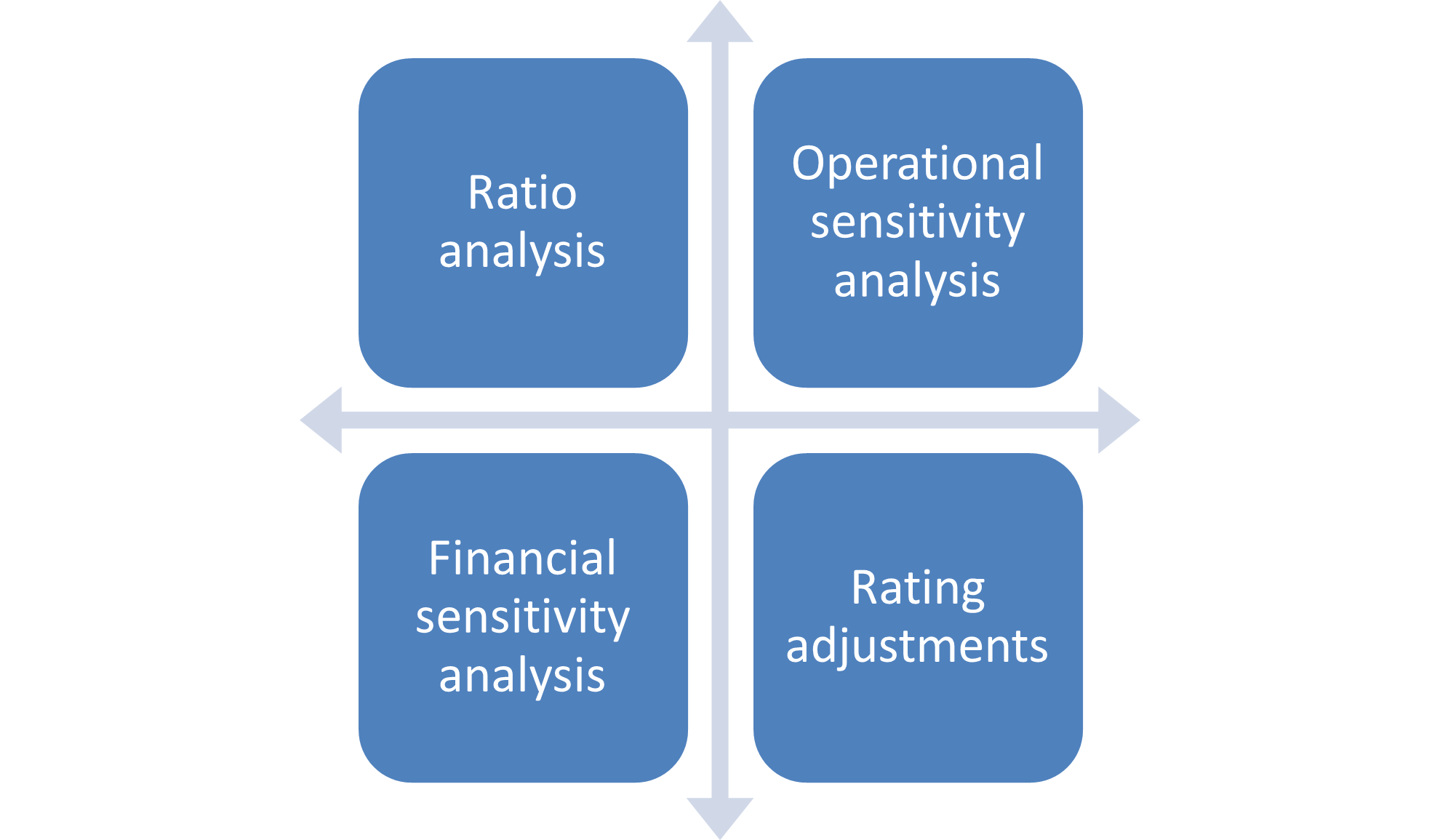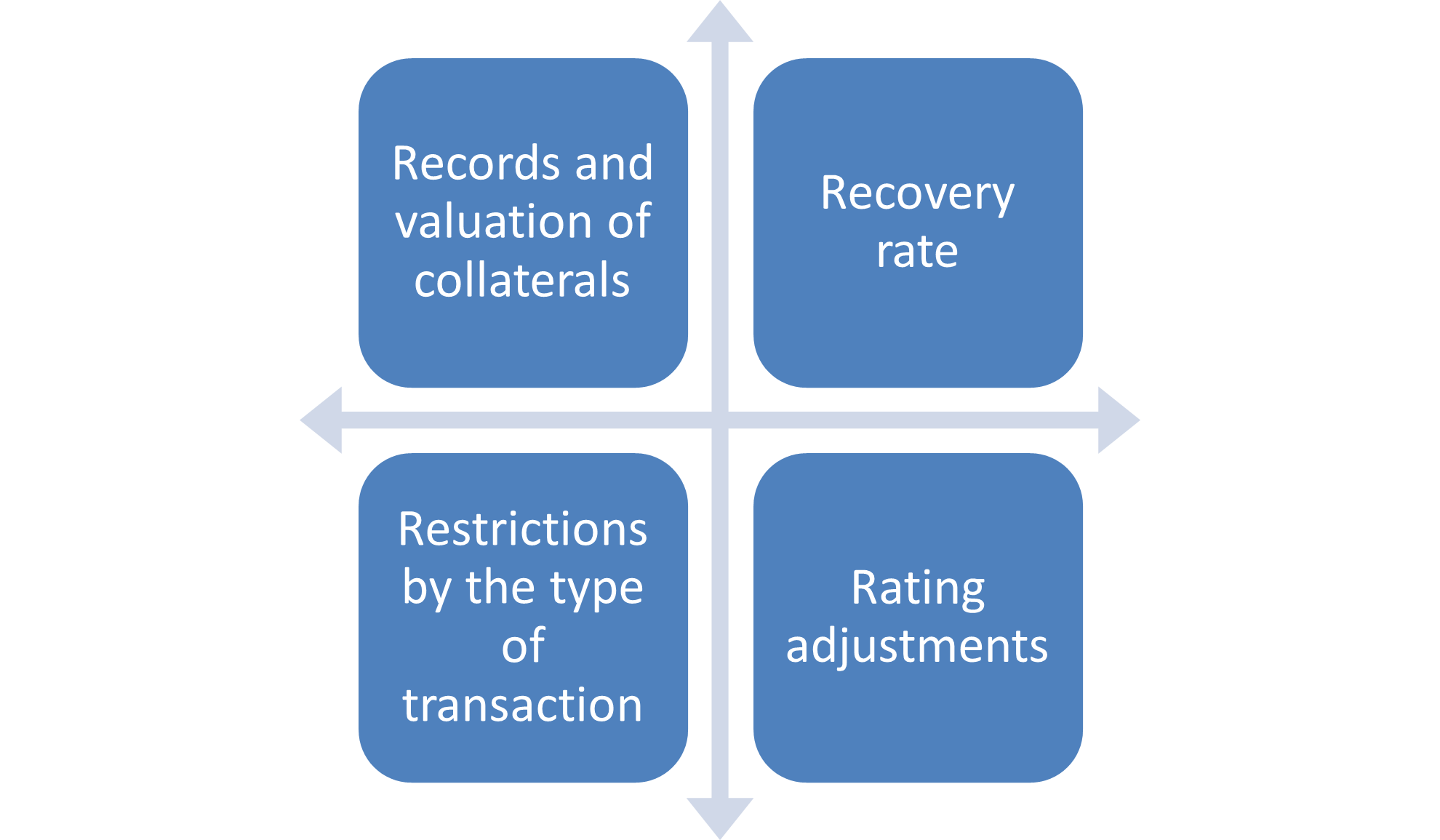The proper functioning of the company on the market and the achievement of its business goals requires access to financial resources. Very often, the lack of financial liquidity contributes to delays in paying off liabilities and debts and, in extreme cases, may even lead to the bankruptcy of the company. Among the many available sources of business financing, one form is external financing in the form of short- or long-term loans. Other forms of financing, such as leasing or factoring, are also possible. Another method of raising capital for new investments and company development may lay in issue of debt securities, e.g. in the form of corporate bonds. However, each of the above-mentioned forms of financing requires a detailed risk assessment of such a transaction. Such an assessment can be comprehensively performed, e.g. with the use of rating models. In this article, I will try to explain the process of risk assessment of transactions using the rating method
What is included in the rating of a transaction?
The rating of credit transactions is a very important element of risk assessment and, together with the entity rating, is the basic mechanism of credit/operational risk management in banking institutions, rating agencies and companies offering leasing or factoring products.
I will discuss the issue of assigning a transaction a rating using the example of the process of assessing the issuance of corporate bonds. It is worth mentioning that the elements of the latter also occur in the assessment of other types of credit transactions (i.e. applications for credit, leasing or factoring products) – thus they are universal components of the credit risk calculation.
The issue rating is assigned to determine the quality of the issued debt instruments and to calculate the expected credit risk of the transaction over the horizon from the bond issue to maturity. Institutions that assign transaction ratings (i.e. rating agencies, banks) very often have their own transaction risk assessment systems. Despite such an individual approach, the mechanisms used are in fact very similar and use a scale of a dozen or so levels to determine the level of the issuer’s ability to meet its financial commitment. Transaction evaluation is very often performed in two variants, namely as:
- Assessment of an unsecured transaction – which mainly takes into consideration the following two: an assessment of the entity’s expected ability to generate surplus cash and the potential sensitivity of the company to changes in operational and financial factors,
- Assessment of a secured transaction – where the type of issue and the degree of its collateralisation are important, and an analysis of the value of the expected recovery ratio is made (Recovery Ratio), and the same as an assessment of the level of expected losses (Loss Given Default) in the event of default by the issuer.
Very often, the rating of a transaction is determined using the same rating classes used in the entity’s rating. The transaction rating is most often calculated on an annual basis, based on financial forecasts over the lifecycle of the said financial instrument. In the case of issues longer than one year, the final rating of the issue is usually the lowest of the ratings calculated over the entire period being assessed.
Assessment of an unsecured transaction
The figure below presents the most important elements of an unsecured transaction assessment, which I will briefly discuss later in this article.

The conducted ratio analysis of an unsecured transaction is aimed at analysing the entity’s ability to generate surplus cash required to settle repayments in accordance with the agreed schedule. The analysis is performed on the basis of the company’s financial forecasts, including the Profit and Loss Account (PZiS), Balance Sheet and Cash Flow Statement (RPP) for the period until the maturity date of the issue. The calculated financial ratios include interest-bearing debt indicators, debt servicing capacity ratios and, for example, adjusted liquidity and operating margin ratios.
In the next step of the assessment process, the potential sensitivity of the company to changes in operational and financial factors is assessed, most often in the form of a sensitivity analysis. Such an analysis allows for the possible adjustment of the assumptions made in the financial forecasts at the operational, financial and combined levels. The process of sensitivity analysis usually uses predefined operational sensitivity matrices, specifying the maximum allowable decreases in sales and EBITDA of the company, and financial sensitivity, specifying the maximum allowable increases in interest rates and increases/decreases in currency exchange rates. The result of the sensitivity analysis is an assessment of the expected combined level of risk (operational and financial). Finally, the rating of an unsecured transaction is adjusted, if necessary, with any sensitivities or additional factors identified by the analyst accepting the system assessment.
Secured Transaction Rating
The rating assessment of a secured transaction is performed when a transaction (issue) provides for granting of security by the issuer or a third party. The result of such an assessment is the rating assigned to the secured transaction, taking into account the type of issue and the degree of its security. The assessment of the degree of transaction security is calculated by analyzing the value of the expected recovery ratio from collateral (RR) and the level of expected losses (LGD) in the event of default by the issuer.

In the process of assessing a hedged transaction, a record is made of the collateral items, their automatic valuation (if the system is equipped with automatic valuation matrices and matrices of factors reducing the value of the proposed collaterals) and possible manual adjustments in order to determine the real value of the collateral.
Subsequently, the calculation of recovery ratios is performed based on the expected proceeds from the realization of the collateral and compared to the sum of debt over the entire issuance period. In the process of determining the rating of a secured issue, the rating constraints of the type of issue are also taken into account, as the degree of its security may affect the effectiveness of debt recovery.
Finally, the rating of a secured transaction is adjusted by additional factors identified by the analyst accepting the system assessment. When the final rating of the transaction is determined, the rating outlook is assigned (e.g. positive, stable, negative), thus indicating the expected and most probable direction of the rating changes forecasted over the next 12 months.
Summary
At VSoft, for over 25 years we have been providing our clients with support in the area of comprehensive rating of transactions. Our proprietary VSoft Rating solution supports the complete process of rating of entities and related transactions (e.g. loans, leasing, factoring, issue of debt securities). The solution can be implemented in the variant of handling manual processes supervised by risk analysts, as well as fully automating specific steps of the assessment process (i.e. financial and ratio analysis, sensitivity analysis, collateral values assessment, recovery ratios evaluation, rating). This approach allows for using VSoft Rating solution, ranging from medium-sized companies to the largest banking institutions in Poland. The VSoft Rating platform provides our clients with a central place for risk assessment, at the same time giving the possibility of its free development in the field of creating new, dedicated rating models.
Darek has been working at VSoft for over 15 years, he is currently a business solutions architect, creating solutions in the areas of selling credit products and credit risk assessment. Previously, a programmer, leader and manager of the software department responsible for the implementation and development of solutions for the financial sector clients. At work, he combines technical knowledge with business knowledge, focusing on simple solutions adapted to the changing business needs.




